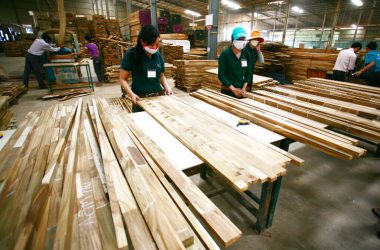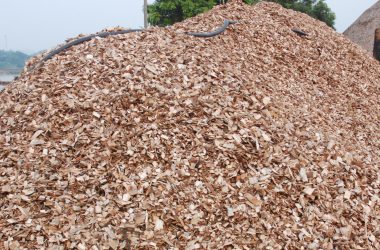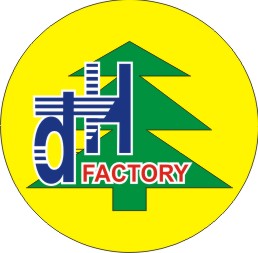The draft decree increases the woodchip export tariff to 5% issued by the Ministry of Finance to ensure that raw materials for domestic production are receiving the feedback and contributions from other associations, the State management agencies and businesses who are most impacted and have experienced in the time wood chip export tariff increased by 2%. The following information is recorded by Go Viet Magazine on the draft of increasing the tariff to 5% and the Government’s policy of making a big timber material source:
Mr. Nguyen Anh Tuan – Director of Quy Nhon Woodchip Co., Ltd. :
The increase in export tariff will reduce the competitiveness of the Vietnam’s chip industry for other chip export markets, because it is necessary to sell at higher prices to ensure profits for businesses, which will make customers divert to other markets. The corollary is that the chip industry faces with many difficulties, even it is unable to maintain its operation and development. In my opinion, the tariff increase will immediately affect the chip businesses and have biggest impacts on forest planters. If you have to reduce the price of buying input raw materials, it will immediately affect the effectiveness of the forest occupation and the income of the forest growers. If afforestation is no longer effective, it will negatively affect the national target on forest protection and development, the objectives following Government’s policy as well as programs such as hunger eradication and poverty reduction, re-greening of barren hills, improving environment, combating climate changes etc.
And especially negative impacts on forestry and livelihoods in mountainous, remote and isolated areas and ethnic minorities with the majority of poor and near poor households. I think that the State management agencies need to study and survey the factual situation, they should not solve the problem at the top part which impose tariff or increase tariff, because forest growers have not benefited much from forest development yet, because they often suffer from the consequences of foreign customers pressing them prices and natural disasters and floods, if they are subject to export tariff, forestry occupation in mountainous districts, remote areas and ethnic minority etc (the majority are poor and near poor households) is very difficult for them to develop. The Government needs to direct the ministries and departments to assess the impact of imposing and increasing export tariff on woodchips in order to have a plan of increasing suitable tariff without having negative impacts on the area of planted forests and forest planters. Regarding the policy of making large timber material sources, in my opinion, the State management agencies need to implement the first determinant that forest planters are really owners who are allocated land or forest, granted long-term land use rights, because this is a condition for issuing the FSC, FM, PEFC, etc. And solving the problem of capital and credit incentives for the people to grow large timber forests.
Mr Vo Ngoc Long, Director of Dai Thang Ninh Tay Wood Chips Processing Co., Ltd.:
I realize that, since the wood chip export tariff increased by 2% a few years ago, or it can increase to 5% in the near future, generally it will not affect much to woodchip export enterprises which have main impact on forest planters. This discourages forest growers from developing the plantation areas, but on the contrary, they will massively harvest forest plantation areas in order to minimize the risks of increasing the export tariff of woodchips. We know that the investment cycle of planting forests takes about 5 to 7 years, including many stages of planting, managing, taking care and the prevention of forest fires, so if the tariff increases to 5%, it will have more risks and the areas of afforestation mostly in remote areas with highly mountainous terrain, difficult transportation and costly logging. Therefore, forest growers need the State to have a stable policy to secure and invest in sustainable forest development. The increase in export tariff on woodchips will certainly have impacts on the investment in afforestation, the completion of the forest cover target from 41.6% to 45% of the Prime Minister. And if you can do well the policy of making big timber materials, which will make high economic value for forest growers. For large timber forests, high cellulose content makes higher quality and productivity of woodchips than logging small timber forests.
Mr Nguyen Ni, Director of Dung Quat Paper Material Co., Ltd.:
First of all, the value of woodchip export refers to forest growers, so if imposing the export tariff at 5%, the first impacted people are households involved in planting forests rather than processing enterprises. Enterprises only have difficulties in the first time because of inventory and contracts signed in advance. However, they will then rebalance to reduce the purchasing price paid to forest growers. In the long term, the high cost will make foreign purchasing companies look for other markets better, cheaper, then demand will decrease. In my opinion, if the 5% tariff increase, the income of forest planters will decrease, it will certainly affect the national target program of 5 million hectares of forests. Meanwhile, we should focus on the policy of making large sources of timber materials, because this is the right policy of the Government, planning for large timber plantation areas will proactively help establish the sources of raw materials, make opportunities for businesses to access to high-quality wood sources serving for manufacturing and wood processing for export, to meet the demand of domestic employment and labor. Encouraging large timber plantations and making raw materials for the wood processing industry are suitable for all domestic woodworking enterprises, including processing woodchips for export. Because in fact, old and high quality wood will increase profits in processing export woodchips. In addition, the use of large timber trees to process wood products make the woodworking industry develop, businesses are confident enough to provide Vietnamese goods following international standards.
Mr Phan Van Cuong, Director of Pisico Quang Nam Forest Products JSC :
In my opinion, if the export tariff of wood chip increases from 2% to 5%, the State budget will be estimated to increase VND897 billion but it should be considered carefully, who shall be the last one to be subject to this tariff, they are the majority of millions of poor and near-poor households participating in forestry activities, which have negatively impacts on national programs and objectives on forest protection and development such as hunger eradication and poverty reduction, re-greening of barren hills, improve sustainable environment, climate change. I think that, we should not deny and conclude the export of woodchips as raw export, having low economic value, etc because sugar cane, wheat, Acacia contribute greatly to hunger eradication and poverty reduction. From 2012 up to now, the millions of afforestation households are poor and woodchip manufacturing enterprises are always anxious to suffer from tariff and tariff increase. The peak is to impose a 2% tariff since January 1, 2016, on this opportunity, purchased customers has reduced the export price of woodchips for 3 consecutive years. It is common difficulty for all related components to wood chip industry. In my opinion, it should not use the tariff barrier (imposing and increasing tariff) but find out the reason why forest growers do not plant large timber? I propose the Government to direct ministries and central and local departments to assess the impacts of increasing export tariff on woodchips, have a suitable plan of tariff increase without having negative impacts on the areas of planted forests and planters.
Vietnamese wood, No 112- June 2019


































